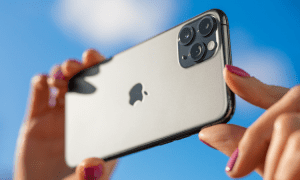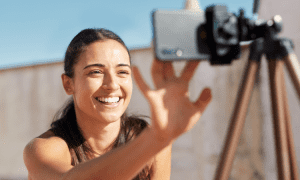

One thing you will hear a lot about as you enter into the world of photography is Exposure. So, what exactly is exposure? Ah, I’m glad you asked!
Exposure is the amount of light captured by the image sensor of a camera. If too much light gets to the sensor, the picture is washed out or too bright. Conversely, if not enough light gets to the sensor, the image will be underexposed or too dark.
Most cameras have a light meter built in that will automatically determine the correct exposure, but when you know the three basics of exposure and how to use them, you can set your camera on manual, go rogue, and get some very groovy results.
Let’s take a look these 3 aspects of Exposure:
- Aperture – The size of the lens opening, measured in f/stops. Aperture controls the depth-of-field which is the area that is in focus in the picture. Aperture can be used to draw attention to one part of the picture (like the boat seen in the sunglasses in the picture below) by blurring the foreground and background with a large aperture opening. One thing to remember is that the f/stop numbers are smaller for larger openings and the numbers are larger for smaller aperture openings i.e. f/1.4 is a large opening and f/22 is tiny. A little confusing I know…
- Shutter Speed – The amount of time the sensor is exposed to the light measured in fractions of a second. Shutter speed can be used to freeze a subject with a fast speed of 1/250 or faster or it can be used to blur motion with a slow speed like 1/4. You can also adjust shutter speed to capture images in low light scenarios IE: increasing the amount of time the camera sensor is exposed to the image/light. In this situation, you usually need a tripod so that you don’t blur your photograph.
- ISO – The light sensitivity of the image sensor. The smaller number (like 100) is considered low and is not very sensitive, and a number like 1600 is high and is very sensitive to light. The higher the ISO speed, the faster the camera gathers light, but it also adds noise to the photograph. Most of the time you should keep the ISO at the lowest setting if there is enough light around you to get the shot you want. Sometimes though, the only way to get a shot is to crank up the ISO. A noisy shot is better than no shot at all.
A couple examples:
  | 1/750 sec at f/5.6, ISO 100 Explanation: 1/750 sec – My nephew was moving around, so I needed to freeze him in place. f/5.6 – I wanted only the shallow area by the sunglasses to be in focus and the background and his nose to be blurred so as not to distract. ISO 100 – it was a sunny day, so there was plenty of light and no need to jack up the ISO. |
  | 1/4sec at f/16, ISO 100 Explanation: 1/4 sec – a slow shutter speed gave the stream a soft effect. f/16 – With the small aperture, the depth-of-field was larger, so everything was in focus. ISO 100 – I had the camera on a tripod so it would be motionless and I could lower the ISO to keep noise out of the picture. |
So with these three components of exposure, you can combine them in all sorts of ways to bring out your inner Ansel Adams. If you like the results of the combination, then who’s to say it’s not the correct exposure? That’s what I love about photography. It’s up to you!
This article may seem like a lot to take in, but the best way to learn this is to grab your camera and go out and take pictures. LOTS of pictures. Then see what happens.
About the Author:
Although the usual hangout for sharing his photography is www.brickmonkey.com, you will also find brickmonkey as an occasional groovyContributor here @ groovyPost.com for photography tips and tricks.
Leave a Reply
Leave a Reply






